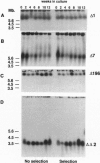Abstract
We have used telomeric DNA to break two acrocentric derivatives of the human Y chromosome into mini-chromosomes that are small enough to be size- fractionated by pulsed-field gel electrophoresis. One of the mini-chromosomes is about 7 Mb in size and sequence-tagged site analysis of this molecule suggests that it corresponds to a simple truncation of the short arm of the Y chromosome. Five of the mini-chromosomes are derived from the long arm, are all rearranged by more than a simple truncation, and range in size from 4.0 Mb to 9 Mb. We have studied the mitotic stabilities of these mini-chromosomes and shown that they are stably maintained by cells proliferating in culture for about 100 cell divisions.
Full text
PDF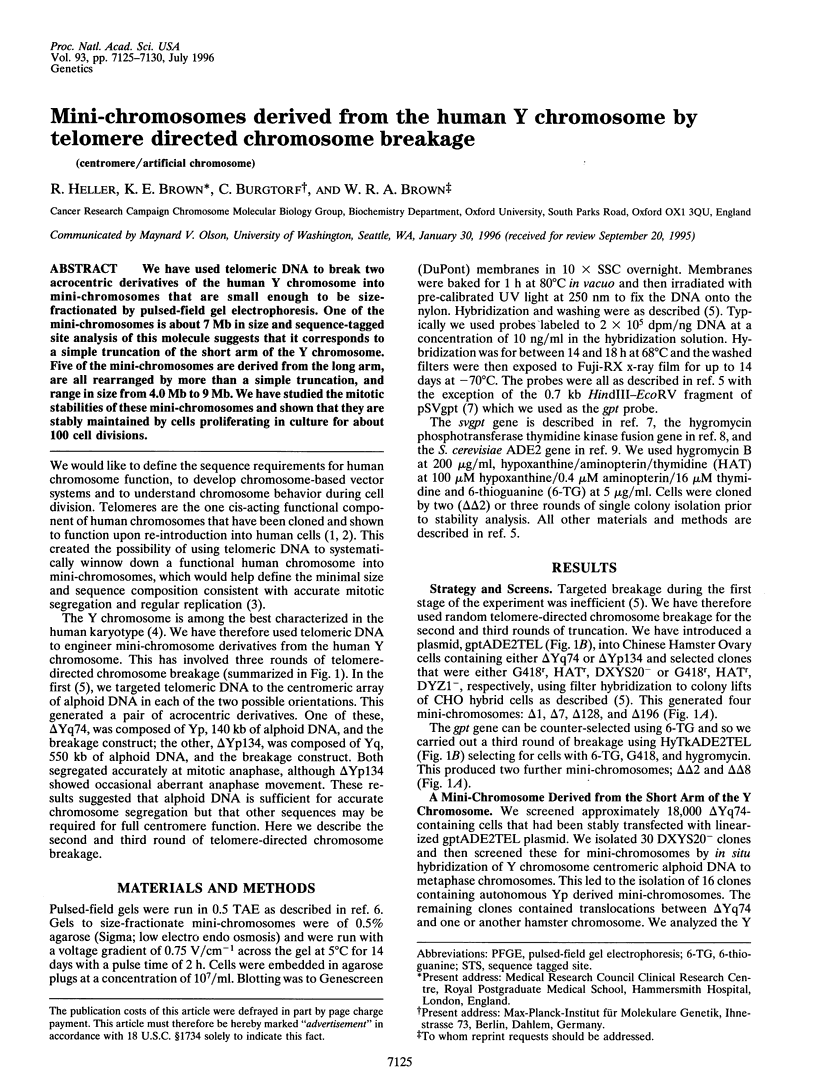
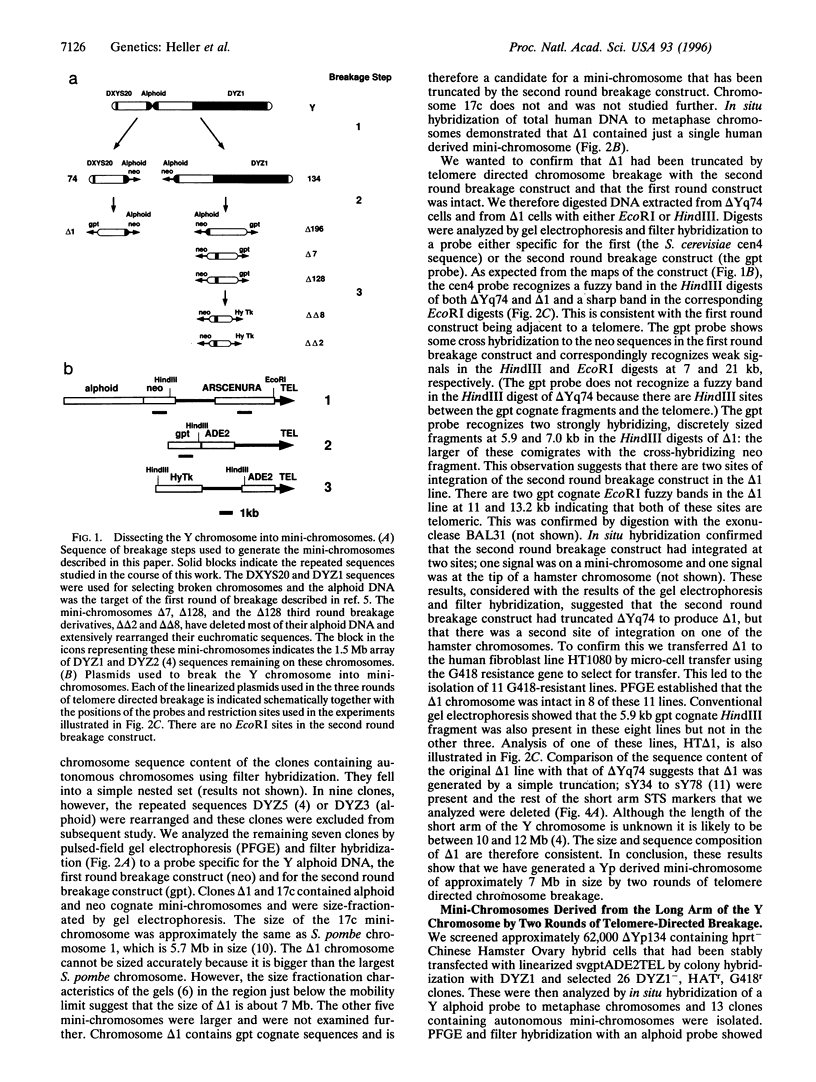
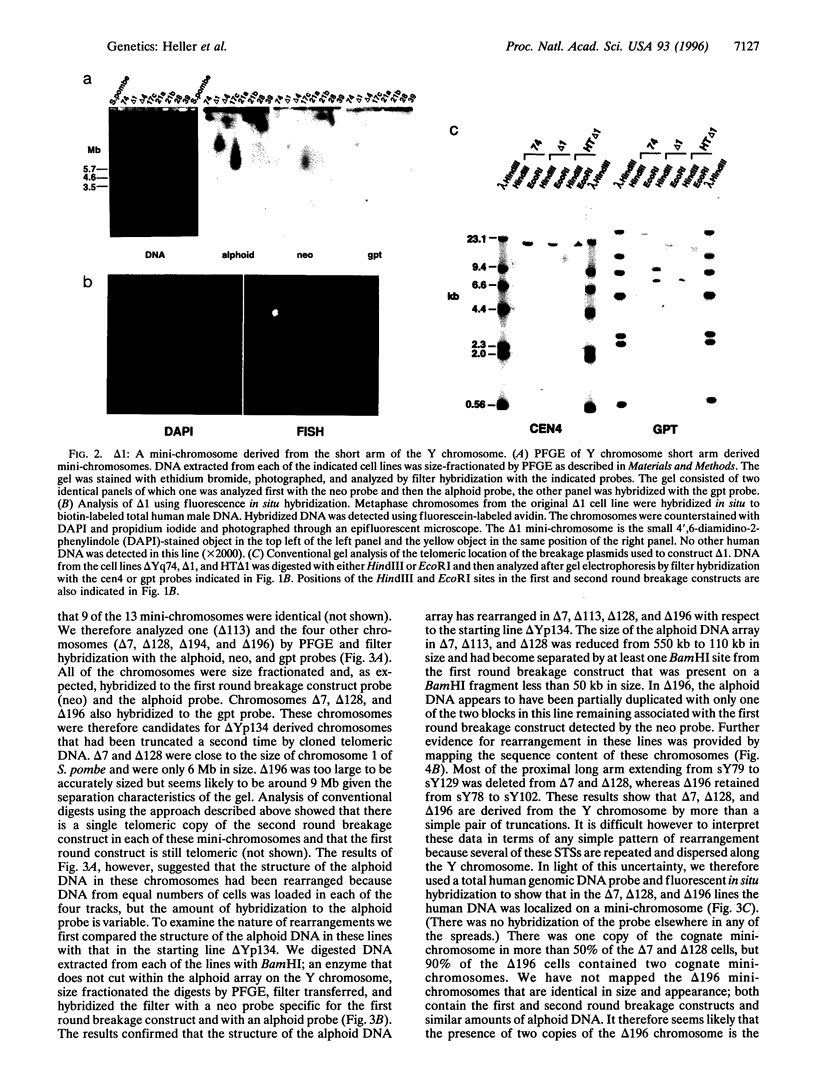
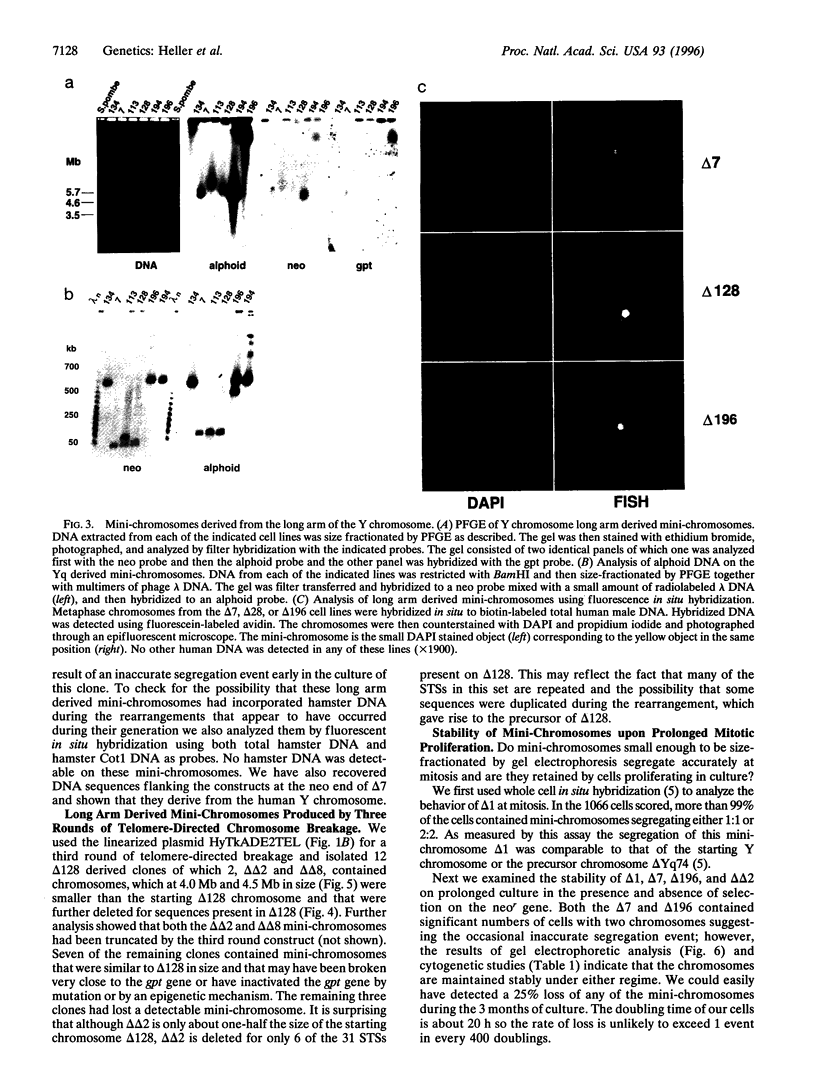
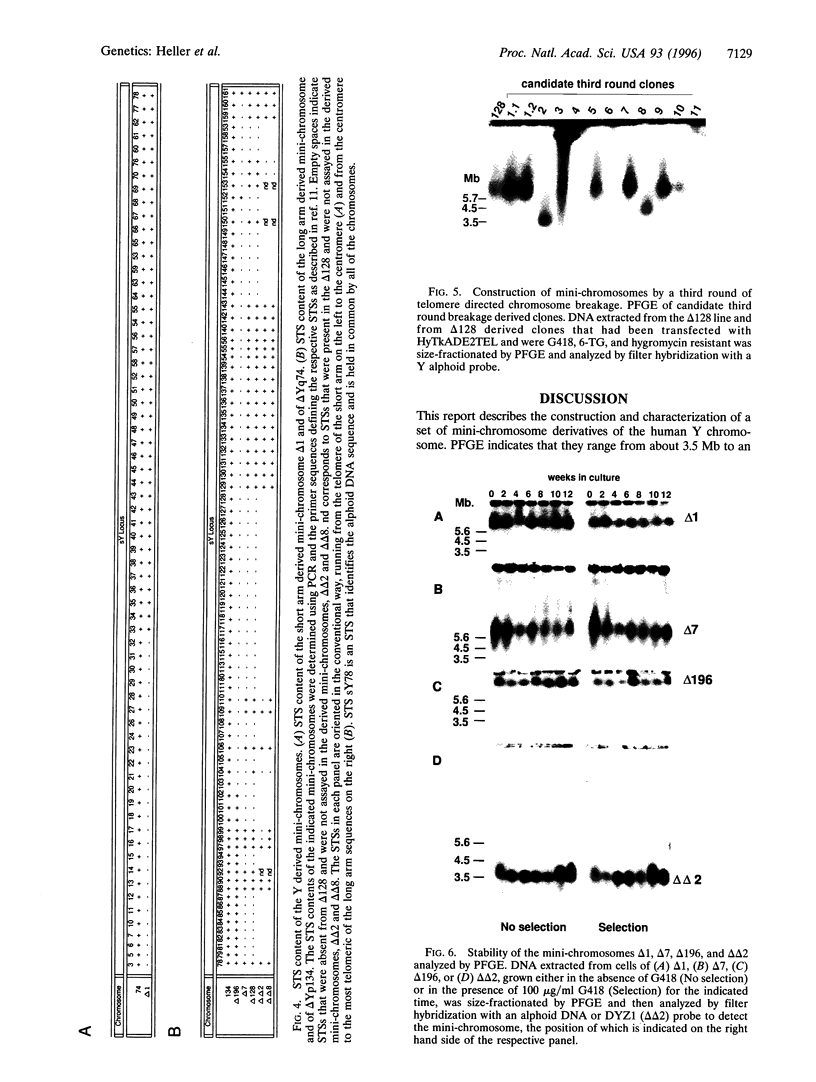
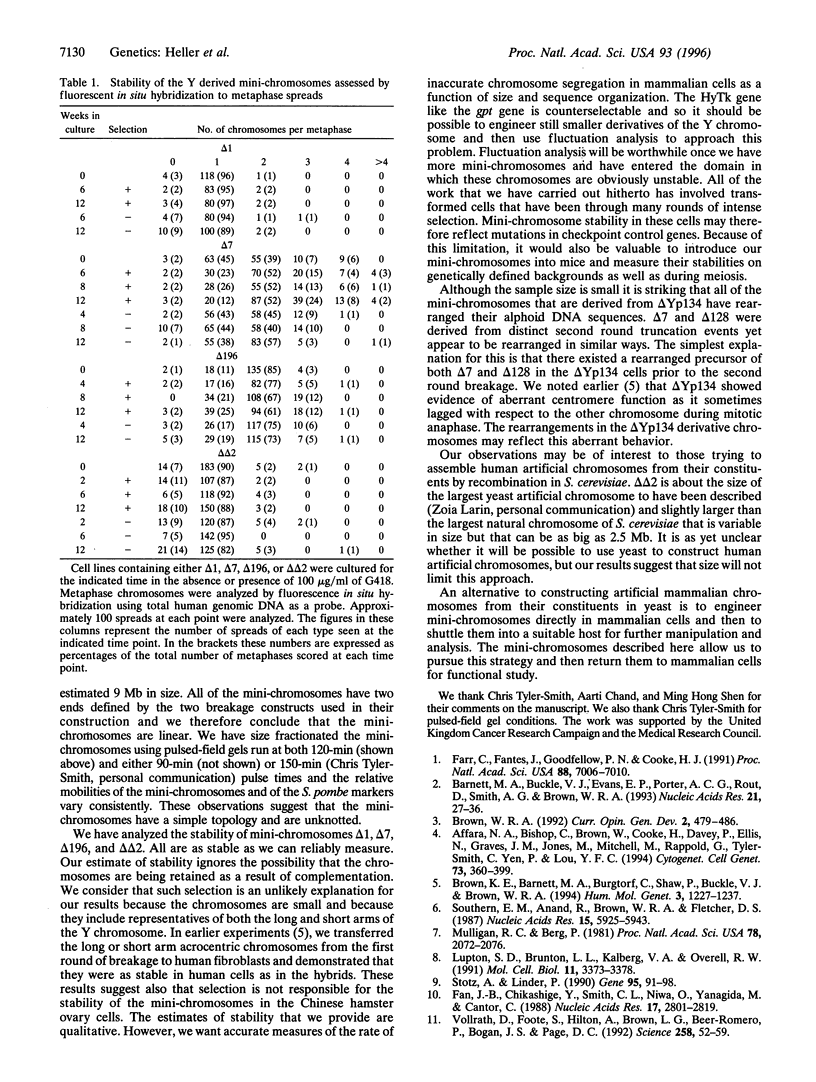
Images in this article
Selected References
These references are in PubMed. This may not be the complete list of references from this article.
- Barnett M. A., Buckle V. J., Evans E. P., Porter A. C., Rout D., Smith A. G., Brown W. R. Telomere directed fragmentation of mammalian chromosomes. Nucleic Acids Res. 1993 Jan 11;21(1):27–36. doi: 10.1093/nar/21.1.27. [DOI] [PMC free article] [PubMed] [Google Scholar]
- Brown K. E., Barnett M. A., Burgtorf C., Shaw P., Buckle V. J., Brown W. R. Dissecting the centromere of the human Y chromosome with cloned telomeric DNA. Hum Mol Genet. 1994 Aug;3(8):1227–1237. doi: 10.1093/hmg/3.8.1227. [DOI] [PubMed] [Google Scholar]
- Brown W. R. Mammalian artificial chromosomes. Curr Opin Genet Dev. 1992 Jun;2(3):479–486. doi: 10.1016/s0959-437x(05)80161-3. [DOI] [PubMed] [Google Scholar]
- Fan J. B., Chikashige Y., Smith C. L., Niwa O., Yanagida M., Cantor C. R. Construction of a Not I restriction map of the fission yeast Schizosaccharomyces pombe genome. Nucleic Acids Res. 1989 Apr 11;17(7):2801–2818. doi: 10.1093/nar/17.7.2801. [DOI] [PMC free article] [PubMed] [Google Scholar]
- Farr C., Fantes J., Goodfellow P., Cooke H. Functional reintroduction of human telomeres into mammalian cells. Proc Natl Acad Sci U S A. 1991 Aug 15;88(16):7006–7010. doi: 10.1073/pnas.88.16.7006. [DOI] [PMC free article] [PubMed] [Google Scholar]
- Lupton S. D., Brunton L. L., Kalberg V. A., Overell R. W. Dominant positive and negative selection using a hygromycin phosphotransferase-thymidine kinase fusion gene. Mol Cell Biol. 1991 Jun;11(6):3374–3378. doi: 10.1128/mcb.11.6.3374. [DOI] [PMC free article] [PubMed] [Google Scholar]
- Mulligan R. C., Berg P. Selection for animal cells that express the Escherichia coli gene coding for xanthine-guanine phosphoribosyltransferase. Proc Natl Acad Sci U S A. 1981 Apr;78(4):2072–2076. doi: 10.1073/pnas.78.4.2072. [DOI] [PMC free article] [PubMed] [Google Scholar]
- Southern E. M., Anand R., Brown W. R., Fletcher D. S. A model for the separation of large DNA molecules by crossed field gel electrophoresis. Nucleic Acids Res. 1987 Aug 11;15(15):5925–5943. doi: 10.1093/nar/15.15.5925. [DOI] [PMC free article] [PubMed] [Google Scholar]
- Stotz A., Linder P. The ADE2 gene from Saccharomyces cerevisiae: sequence and new vectors. Gene. 1990 Oct 30;95(1):91–98. doi: 10.1016/0378-1119(90)90418-q. [DOI] [PubMed] [Google Scholar]
- Vollrath D., Foote S., Hilton A., Brown L. G., Beer-Romero P., Bogan J. S., Page D. C. The human Y chromosome: a 43-interval map based on naturally occurring deletions. Science. 1992 Oct 2;258(5079):52–59. doi: 10.1126/science.1439769. [DOI] [PubMed] [Google Scholar]






